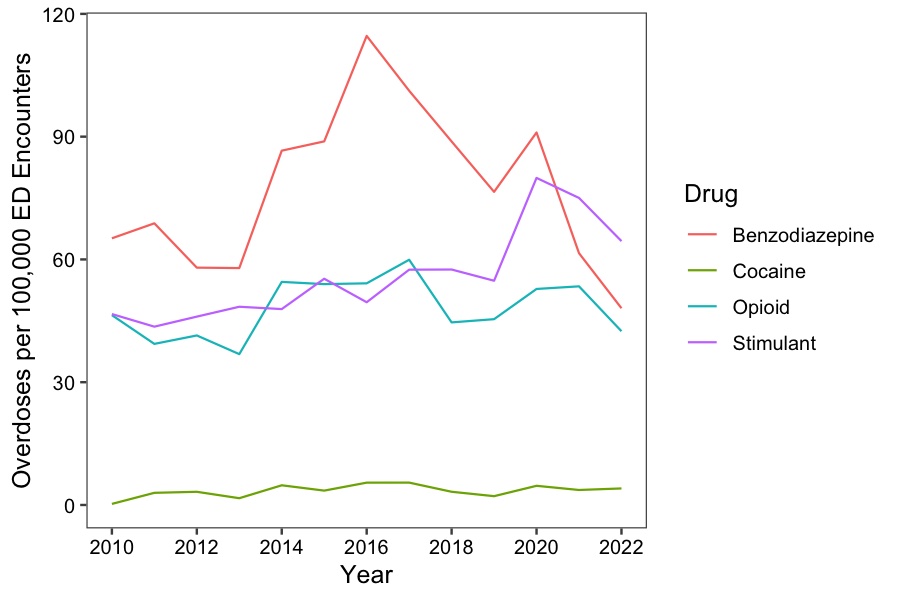Adolescent Medicine: Substance Use
Adolescent Medicine 2
15 - Trends in Non-Fatal Adolescent and Young Adult Drug Overdoses Presenting to US Emergency Departments
Publication Number: 15.2

Michael S. Toce, MD MS (he/him/his)
Instructor of Pediatrics
Boston Children's Hospital
Boston, Massachusetts, United States
Presenting Author(s)
Background: Substance misuse and overdose remain a significant public health concern among youths, with CDC data pointing to rising rates of overdose deaths in this age group. Non-fatal drug overdoses have been identified as a key opportunity for reducing drug-related harms, though healthcare encounters for these events remain poorly described among adolescents and young adults.
Objective: To quantify and examine temporal trends in non-fatal drug overdoses among youths presenting to the emergency department (ED).
Design/Methods:
This is a retrospective cohort study of adolescents (12-17 years) and young adults (18-21 years) who presented with a non-fatal drug overdose between 1/2010 and 10/2022 to the ED of a hospital participating in the Pediatric Health Information System (PHIS). Overdoses were identified using ICD codes for opioid, benzodiazepine, cocaine, and stimulant overdoses. We usedχ2-tests to compare categorical variables and negative binomial regression to assess temporal trends.
Results:
Among the 10,275 individuals with an ED visit for a non-fatal drug overdose, patients were predominantly female (59.0%) and the median age was 15.8 years, [IQR 14.6, 16.9] (Table 1). Benzodiazepine overdoses were the most common at 78 per 100,000 ED encounters. Females were more likely to overdose on opioids (p < 0.001), while males were more likely to overdose on benzodiazepines (p< 0.001) and cocaine (p = 0.004). There was no sex difference for stimulant overdoses (p = 0.35). Over a third (35.0%) of patients required hospitalization following their ED visit. Visits for overdoses increased over the study period (2.4% per year [95% CI, 0.5 to 4.4]) with a peak in 2020 at 218 per 100,000 ED encounters (Figure 1). Visits by adolescents, but not young adults, increased over the study period (2.7% per year [95% CI, 0.8 to 4.6]) and peaked in 2020 (234 per 100,000 ED encounters). Stimulant overdoses (4.4% [95% CI, 5.0 to 5.9] exhibited the greatest increase, while opioid (1.2% per year [95% CI, -0.7 to 3.3]) benzodiazepine (0.5% per year [95% CI, -2.9 to 4.1]) and cocaine overdoses (5.8% per year [95% CI, -0.6 to 12.6]) remained stable (Figure 2).
Conclusion(s):
ED visits for non-fatal drug overdoses remain high among adolescents and young adults, with recent increases in stimulant-related overdoses. In addition, sex-based differences in drugs implicated in overdoses present opportunities for targeted interventions to reduce future harm. 
.jpg)
.jpg)
